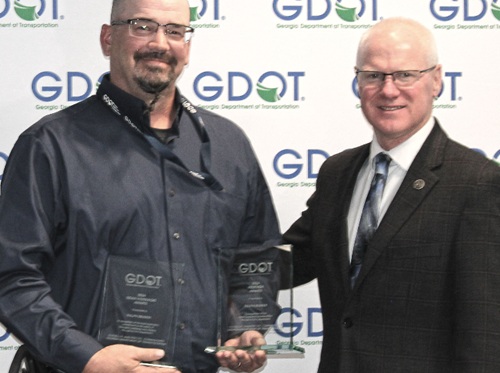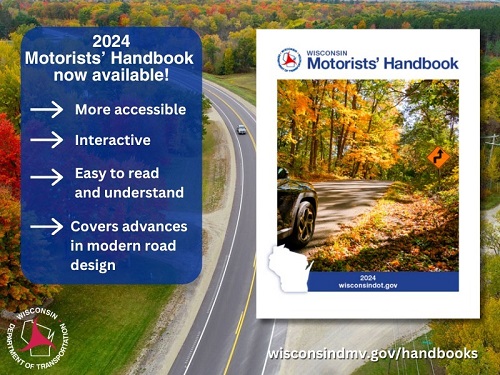The Wisconsin Department of Transportation recently unveiled an updated version of its online “Motorist Handbook” based on “plain language principles” to deliver information regarding the “rules of the road” that is “clear, understandable, and easy to read.”
[Above photo by Wisconsin DOT]
Issued via the agency’s Division of Motor Vehicles, the new handbook focuses on making language “simple and straightforward,” while featuring updates and revisions to address safety advances built into Wisconsin’s road designs, including Diverging Diamond Interchanges, dynamic shoulder use, and roundabouts. The highway signs section also reflects the most up-to-date sign images, Wisconsin DOT said.
“We’re seeking ways to make services more convenient, inclusive and accessible for all Wisconsin residents. We’re also taking every opportunity to make our roads safer,” noted Tommy Winkler, the agency’s DMV administrator, in a statement. “Presenting Wisconsin drivers with a manual that explains the rules for the road in a clear, concise and readable manner is another step toward fulfilling that mission.”
In addition to covering the driving basics and signs, he said the online interactive publication explains the process of getting and maintaining a Wisconsin driver license.
Furthermore, important safety topics – including dangerous driving behaviors and tips for handling emergencies – are also addressed in the new online handbook, with embedded links taking the reader to helpful resources.
Those state departments of transportation with DMV responsibilities have been engaged in a number of service-focused improvements over the last few months.
For example, in April, the Arizona Department of Transportation launched a program through which motorists on the autism spectrum can place their credentials in special blue envelopes to help enhance communication with law enforcement officers during traffic stops.
The blue envelope is a voluntary way to hold important vehicle documents such as insurance and registration, while also being a communication tool between the driver and law enforcement during an interaction.
In March as part of an effort to shorten lines and wait times at North Carolina Division of Motor Vehicle (NCDMV) offices statewide while providing services outside of typical office hours, the North Carolina Department of Transportation began pilot testing the use of self-service kiosks in three Harris Teeter grocery stores.
At the kiosks, NCDMV – which is a division of the NCDOT – said customers can renew driver licenses or state identification cards, unless they renewed online the previous time; order a duplicate or change the address for current driver licenses, permits, or state ID cards, though kiosk users must know their driver license/ID number to complete those transactions; and apply/update voter registration information as part of the kiosk-based driver license/ID transactions.
And in October 2023, the Oregon Department of Transportation began offering the agency’s DMV knowledge test anywhere that has reliable internet; eliminating the need to visit a DMV office for in-person testing.
“Online knowledge testing is now part of DMV’s expanding menu of online services,” noted Oregon DMV Administrator Amy Joyce at the time. “Using a computer that has a webcam, keyboard, and mouse allows customers to take the DMV knowledge test at a time that works best for them – with no waiting in line at the office or for appointments to become available, with no cost difference between online testing and the in-person format.”
 States
States
Georgia DOT Foreman Receives Two Heroism Awards
January 2, 2026 States
States

